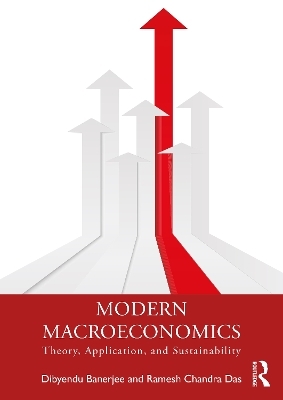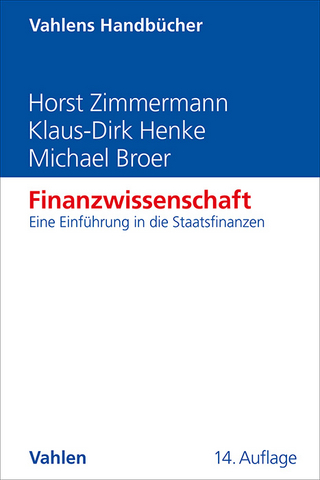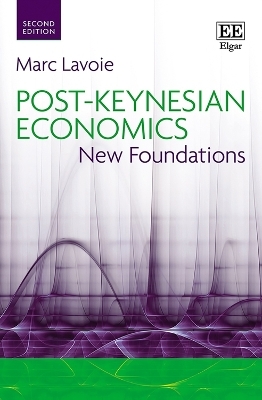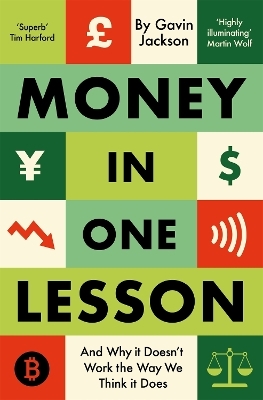
Modern Macroeconomics
Routledge India (Verlag)
978-1-032-81736-1 (ISBN)
- Lieferbar (Termin unbekannt)
- Versandkostenfrei innerhalb Deutschlands
- Auch auf Rechnung
- Verfügbarkeit in der Filiale vor Ort prüfen
- Artikel merken
This comprehensive textbook deals with multidimensional aspects of macroeconomics through lucid presentation of concepts and critical comparison of different schools of thought.
The book explains how the incomes of a country, prices of goods and services, level of employment, interest rates and so on are determined and how an economy progresses. It attempts to re-establish the existing theories behind the determination of macro variables and the growth process of an economy. In the process, it captures the significance of the debate between the classical orthodox theories and Keynesian modernism and its implications.
Besides, adhering to traditional aspects, the volume also focuses on recent developments such as green macroeconomics. Undergraduate and postgraduate students of economics and business economics will find this book immensely helpful.
Dibyendu Banerjee is currently Associate Professor of Economics at Serampore College, West Bengal, India; with 21 years of teaching and research experience in various fields of the subject. He completed his Bachelor (Hons.) of economics at R. K. Mission, Narendrapur, West Bengal; and his master’s degree at University of Calcutta. He obtained his doctorate from the same university, working under the supervision of Professor Sarbajit Chaudhuri. He started his career as a lecturer in economics at A. K. P. C. Mahavidyalaya, Hooghly. Dr. Banerjee, with his specialisation in advanced economic theory, has contributed several research papers to many renowned national and international journals such as Research in Economics, Economic Modelling, International Review of Economics, and Finance. He has coauthored a textbook titled Macroeconomics: From Short Run to Long Run. His current research interests include labour economics, development economics, competitive general equilibrium models, and applied microeconomics. Ramesh Chandra Das is currently Professor at the Department of Economics of Vidyasagar University in the state of West Bengal, India. He has obtained his master’s, M. Phil, and PhD degrees in economics from the University of Calcutta. Prof. Das has the teaching and research experience of about 25 years to his credit. His main areas of research lie in theoretical and applied macroeconomics, financial economics, environmental economics and political economics. He has contributed more than 100 research papers to national and international journals and books along with more than a dozen edited volumes in different areas of the subject. Besides, he has written text and reference books on microeconomics, macroeconomics, and banking economics with internationally reputed publishers for different fields of readers and academicians and has been acting as the editor-in-chief of a couple of refereed journals.
Part I: Macroeconomics- Objectives, Instruments, Concepts and Phases of Developments 1. Why to study macroeconomics and what are its objectives? 2. National Income Accounting Part II: Classical School of Thought-The Long Run Supply Side Model 3. Classical model 4. Money, quantity theory and price level 5. Theory of inflation Part III: Modern Macroeconomics-The Keynesian Short Run Demand Side Models 6. The Simple Two Sector Economy-Simple Keynesian Model without Government-Model I 7. Introduction of Government Sector into the Simple Keynesian Model- Model II 8. Product Market Equilibrium- Model III 9. Money Market Equilibrium -Model IV 10. Interactions of Fiscal and Monetary Policies in IS-LM Models- Model V 11. Aggregate Demand and Aggregate Supply Analysis 12. Aggregate Supply, Inflation and Phillips Curve 13. The Complete Keynesian Model (CKM) Part IV: Micro Foundations of Macroeconomics-The Consumption and Investment Behaviours 14. Consumption function 15. Investment behaviour 16. Demand for money 17. Theory of money supply 18. Schools of thoughts in macroeconomics Part V: Open Economy Macroeconomics 19. Open Economy Macroeconomics—Concepts and Applications 20. Accounting of International Linkages—The Balance of Payments 21. Interactions among Commodity Market, Money Market and External Market Part VI: Economics of Growth and Convergence-The Longer Run Models 22. Theories of Economic Growth-Classical, Harrod and Domar 23. The Neoclassical Growth Model 24. Endogenous Growth Theories-The Modern Growth Approach Part VII: Sustainable Development and Green Macroeconomics 25. Sustainable development 26. Ecological macroeconomics
| Erscheinungsdatum | 22.11.2024 |
|---|---|
| Zusatzinfo | 18 Tables, black and white; 238 Halftones, black and white; 238 Illustrations, black and white |
| Verlagsort | London |
| Sprache | englisch |
| Maße | 174 x 246 mm |
| Gewicht | 1200 g |
| Themenwelt | Wirtschaft ► Volkswirtschaftslehre ► Finanzwissenschaft |
| Wirtschaft ► Volkswirtschaftslehre ► Makroökonomie | |
| ISBN-10 | 1-032-81736-4 / 1032817364 |
| ISBN-13 | 978-1-032-81736-1 / 9781032817361 |
| Zustand | Neuware |
| Haben Sie eine Frage zum Produkt? |
aus dem Bereich


